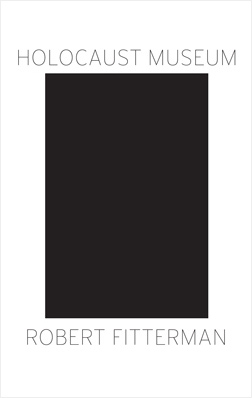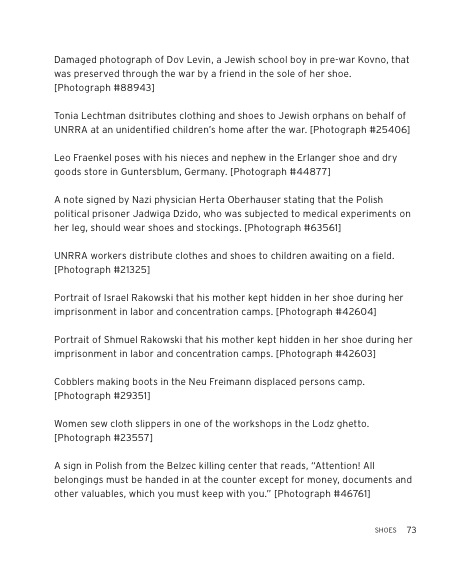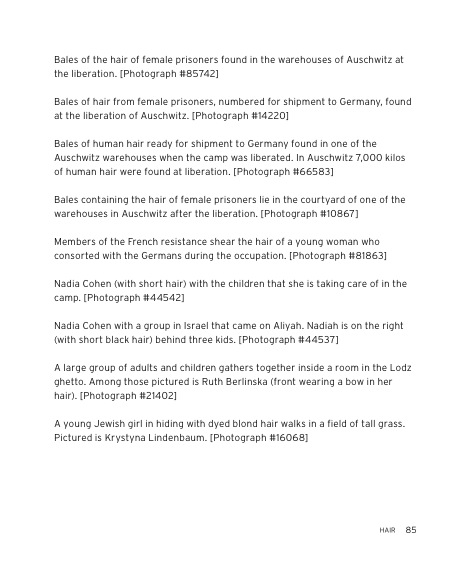
Reviewed April 1, 2015 by Maggie Rosenau.
Museums have evolved from elite repositories preserving natural and cultural heritage to institutions that aim to promote learning, research, and entertainment. They tell us our own, or others’ stories through collections of artwork and anthropological treasures, bringing history to life and people together. Upholding a responsibility to represent communities, events, and ideas, museums facilitate connections between the visitor and the significance of objects by employing a variety of interpretation methods—text being the most important. Text reveals the intangible meanings of objects and simultaneously shapes the experiences for the visitor as they absorb the tangible material. Consequently, the museum voice is an authorial as well as authoritative one. Its language both produces and narrates our past and present.
The authorial voice of the museum is an idea conceptual poet Robert Fitterman invites his audience to think about with his poem Holocaust Museum. Calling specific attention to the voice of the National Holocaust Memorial Museum in Washington, D.C., Fitterman has created something like a poem cycle constructed of nearly 700 captions appropriated from the Photo Archives. Taken from the museum’s online database, textual content is removed from corresponding images and organized into 17 sections, the themes of which include propaganda, family photos, the science of race, shoes, hair, Zyklon B canisters, and mass graves. Each caption is accompanied by a bracketed catalogue number and presented as a single stanza.
Fitterman’s repurposing of Holocaust photo captions for artistic purposes is difficult. It’s difficult to acknowledge this as poetry. It is difficult to open this book and not consider Adorno’s ethical prohibition against post-Auschwitz poeticization. Is this a violation of memory? Is it not barbaric to aestheticize an objective language that chronicles catastrophic events, the visual history of which is now common in our collective memory? The body of information this poem relies on communicates moments of Holocaust history, but this poem is not about the Holocaust. Fitterman repackages the institutional language as something else: a poem that is an idea—one that communicates how the institution shapes the representation of memory. The poem is not expressive, but rather conceptual, which, as co-authors Fitterman and Place state in Notes on Conceptualism, “negates the need for reading in a traditional textual sense.” Its purpose is performative; therefore, the reader’s task is to think about what the poem is and does. Emancipating NHMM text from its interpretive objective and re-purposing that text for a different literary genre invites a critique of the museum’s use of language.
Language is that which gives photographs of the Holocaust their context and meaning. The first challenge Holocaust Museum presents involves making a distinction between image and word. Words shift from being signifiers to signifieds, and objectification becomes a motif. Victims and survivors in the photographs were reduced to objects. The museum’s display of these photographs re-objectifies the subjects. And then, the captions that provide and clarify their subject matter and meaning are severed from the museum context and objectified in Fitterman’s work. He displays the collection of labels in a literary architecture where they transform into objects the reader contemplates. Divorcing text from object makes the reader strain cognitively more than if the object were in front of them and they were passively absorbing meaning. Yet, experiencing the captions in poetic succession affirms how capable words are of creating images. Fitterman denies the museum’s control over the visitor’s relationship to the visual material, and the reader is confronted with questions like: what makes up the material of memory? Does it come from image or the articulation of it? Are image and word codependent? But most important is the recognition that the whole spectacle of baring institutional language in a new poetic space is the subject/concept of the poem.
Museums tend to categorize their visitors into three types: streakers, strollers, and scholars. Fitterman’s audience is a visitor in Holocaust Museum’s conceptual space and can choose how to read the stanza breaks between each label. The reader streaks, or strolls by the next objectified caption, or accepts the pause as invitation to some silent, private reflection. If the reader-visitor comes across visuals, this occurs only in the mind. The poem wants to show that image is dependent on word to create fully comprehensible meaning. Moreover, word is able to create image and meaning on its own. The reader is obliged to examine institutional wording and their own understanding of where the meaning lies. The poem makes its audience think about a language that has power over the shaping of cultural history.
Historian and museum scholar Susan Crane explains that “[a] museum may be any real or imaginary site where the conflict or interaction or simulation of or between personal and collective memory occurs. Museums are more than cultural institutions and showplaces of accumulated objects: they are sites of interaction between cultural and personal identities, between memory and history, between information and knowledge production.” Holocaust Museum thus seems appropriately titled. This book acts like a museum. The author has created a textual architecture divest of the origin’s relevancy. It is now a repository of the American museum’s interpretation and articulation of a catastrophic event and the poet, acting as curator, has created an exhibition of the institution’s wording.
Crane also explains that “[i]f Zeitgeist is the spirit of the age, ours is the age of the ‘cite-geist’ or an age of citation, of desire to be able to refer to what is known or considered to be important and valuable information whether stored in databanks, archives, or museums. To put it another way, ‘cite-geist’ is museal consciousness.” This statement is relevant to Fitterman’s work, for he pilfered textual material directly from the museum’s online collection database. When asked at a public reading about the ethical justification of his appropriation Fitterman answered, “Who has ownership of the articulation of collective memory?” On the grounds that memories belong to everyone—that Holocaust images are shared and preserved in collective memory—should not their respective captions belong to us too? (This answer further supports the idea that Holocaust Museum serves as a museum itself—representing America’s relationship to the memory of those millions murdered during the Holocaust.)
Conceptual poetry mines the web and the public (and private) domain for ready-mades, decontextualizes them and constructs a reduced, experimental, and sometimes absurd language. While this conceptual poem liberates text to incite analysis of museum language as its own genre, it also invites all context. The reader will most likely yield to a desire to access the NHMM’s online archive database, type in several of the bracketed catalogue numbers, and view their corresponding images. Again, after a few (or several minutes) of connecting word to image, experiencing the captions in poetic succession will further affirm word’s influence on creating meaning. The language of the poem originates from a United States national museum, hence, the reader must think about how it is a formal representation of the American culture’s understanding and relationship to the events and memory of the Holocaust. A significant component to the material of collective memory, this objective articulation of interpreting catastrophe is ours* as well.
With his poem, Fitterman challenges the reader to consider the use of institutional language. The poem reduces it to a practical and utilitarian function, displaying it fully emancipated. This seemingly irreverent, Duchampian act achieves two important things. First, it propels the reader toward answering the question: What is the material that makes up collective memory? With no help from the curator-poet, the reader is left to realize that their own mind serves as a storehouse of images that connects them to the language, and ultimately to the culture that has written these articulations describing the Holocaust. Second, this unconventional delivery trumps a desensitization caused by over-exposure to shocking images. The reader is able to reassess a relationship with and perspective of Holocaust memory. One of the responsibilities of the museum is to tell its visitors how to understand the museum object. Captions offer and facilitate interpretation. While the reader wanders self-paced and companionless through the poem, the power institutional language has over shaping cultural memory and interpretation can be considered. Inside of Holocaust Museum, the reader is attended by no one. The objects on display here need no interpretation, as the national museum’s wording essentially belongs to its culture’s visitor-reader. Important remaining questions are these: Does such an intimate encounter with these signifieds provoke a reexamination of America’s linguistic representation of the Holocaust? Does the poem encourage intellectual discussion that extends beyond its own concept or genre, spanning multiple fields? If so, what Fitterman has accomplished is remarkably far from barbaric.
Permission to reproduce images from this book were obtained on February 3, 2014 from Counterpath Press.

